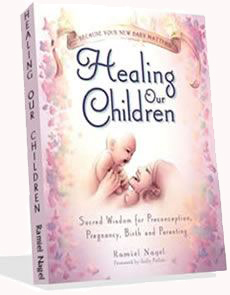Having a child is a beautiful, natural, and empowering experience. Following the birth, especially with the first child, parents sometimes feel confused and unsure. It can be difficult to know the best way to bond and care for your body and baby. Both mother and father may feel awkward and require some adjustment time before fully accepting their new role as parent. All of this is normal. However, following the birth, the mother needs to rest and care for her body. She has gone through an emotional and physical upheaval.
As natural birth revolves around the connection between mother and baby, natural postpartum or postnatal care is the same. Avoiding unnecessary interventions, remaining healthy, and staying together as much as possible is vitally important during the first few weeks. Facilitating natural, non-medical methods of healing following the birth may help to reduce postpartum depression and improve satisfaction with the experience.
Caring for Baby in the First Weeks
In essence, all a baby needs the first few weeks following birth is a healthy mama. Umbilical cords will dry on their own, the use of alcohol to dry out the cord is mostly unnecessary and a largely unscientific practice. Though diapers are convenient, they too can be avoided if the mother is willing to practice elimination communication. Natural techniques of baby care are simple, safe, and effective.
Lotus Birth
If a mother has decided to embark on a , wherein the umbilical cord and placenta remain attached to the baby until falling off naturally, she will need to “re-salt” the placenta each day to keep it from decomposing or smelling foul. This is particularly true of babies born in the summer. Most mothers who choose this route keep the placenta in a basket woven out of natural materials, like cedar, wrapped in a blanket and covered in salt and rosemary. They must move the placenta with position changes. Some moms also choose to wrap the cord in ribbon, though this is largely optional.
Lotus birth encourages bonding and ensures that the baby has retained all of their blood. Mothers are more likely to remain in bed the suggested week or two postpartum, to heal, since they do not want to carry the placenta around with them. Babies also seem to be calmer and more serene.
In most cases, the cord will try within a week or less. There is no further care needed for the baby. If any residual cord remains attached, it can simply be left to air dry. Mothers should try to keep the tummy uncovered as much as possible during the drying phase, rather they choose to lotus birth or use a cord clamp.
Breastfeeding
The supply and demand necessitated for successful breastfeeding is mostly developed during the first few weeks following birth. Mothers should breastfeed on demand during this time, often this means nursing every hour or more, but it is necessary for milk production. It may seem like the baby is always hungry during the first month, this is normal and not a sign of production problems. Most mothers will find that their milk comes in at 3-5 days postpartum. Prior to that, the baby will sustain on colostrum, a special antibody-rich substance that mammals produce to protect their new baby. It is important for moms to remember that new babies have tiny tummies, only capable of holding a few precious ounces during those first days. Mothers should put off giving baby’s pacifiers or bottles before at least 4 weeks of age, since too-early introduction can lead to nipple confusion.
Caring for Mama After Birth
A new mom should spend most of the first few weeks after birth in bed. The only exception should be using the restroom. Otherwise, she should keep a stockpile of healthy and snacks and water on the bedside table and spend her days lying in bed, breastfeeding and resting, with baby by her side. This is the most natural and positive way to spend the immediate postpartum. If possible, enlisting the help of a postpartum doula is a great way to ensure the mother and baby are well taken care of. When this is not possible, the mother’s partner or another family member should remain with her the first few weeks, at least most of the day, to make sure she is staying in bed, eating, and getting plenty of fresh water.
Witch Hazel Pads
Frozen, witch hazel-soaked pads offer natural, cooling comfort for the perineum after birth. They sooth cuts and hemorrhoids, while also providing a natural antiseptic. Moms should have a few on hand prior to the birth. Though this can be done with disposable maxi-pads, cloth mama pads are preferred.
Herbal Tea
Having a few cups of Red Raspberry Leaf tea either warm or chilled, can help to facilitate breastfeeding and strengthen post-labor contractions aimed at shrinking the uterus back to normal size. Having a few cups a day, along with plenty of water, is a good idea.
Other herbal teas like chamomile can aid in relaxation. Making , using a combination of red raspberry leaf, nettles, fennel, and dandelion can also help to increase milk supply and provide comfort for the mother. A commercially prepared version of the tea is also available through most major retailers.


















